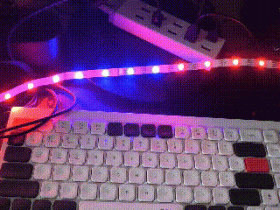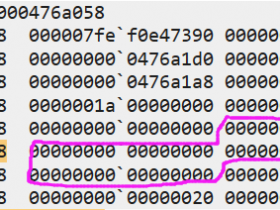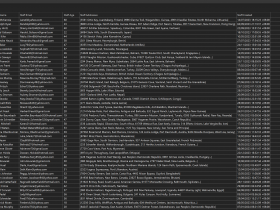- A+
一:背景
1. 讲故事
前些天把 .NET 高级调试 方面的文章索引到 github 的过程中,发现了一个有意思的评论,详见 文章,截图如下:

大概就是说在 Winform 的主线程下执行 Task.Result 会造成死锁,我也看了图中的参考链接, Stephen 是绝对的大佬,不过这篇文章对死锁的成因主要还是大段的文字灌输,没有真的让你眼见为实,那这篇我就从 windbg 的角度来给它剖析下。
二: windbg 分析
1. 真的会死锁吗?
看文章看截图貌似真的会死锁,当然我多年不玩 winform 了,也搞不清楚到底会不会,至少在 Console 中是不会的,得,先上一段测试代码。
public partial class Form1 : Form { public Form1() { InitializeComponent(); } private void button1_Click(object sender, EventArgs e) { var jsonTask = GetJsonAsync("http://cnblogs.com").Result; textBox1.Text = jsonTask; } public async static Task<string> GetJsonAsync(string uri) { using (var client = new HttpClient()) { var jsonString = await client.GetStringAsync(uri); return jsonString; } } } 代码非常简单,把程序跑起来,点一下 click,果然界面卡住了,有点不可思议。
2. 寻找死锁原因
接下来赶紧祭出 windbg 附加到进程上一探究竟吧。
1) 查看主线程
界面无响应了,自然是主线程卡住了,所以急需看一下此时的主线程在干嘛? 用命令 ~0s + !clrstack 即可。
0:000> !clrstack OS Thread Id: 0x5a10 (0) Child SP IP Call Site 0000004d10dfde00 00007ffb889a10e4 [GCFrame: 0000004d10dfde00] 0000004d10dfdf28 00007ffb889a10e4 [HelperMethodFrame_1OBJ: 0000004d10dfdf28] System.Threading.Monitor.ObjWait(Boolean, Int32, System.Object) 0000004d10dfe040 00007ffb66920d64 System.Threading.ManualResetEventSlim.Wait(Int32, System.Threading.CancellationToken) 0000004d10dfe0d0 00007ffb6691b4bb System.Threading.Tasks.Task.SpinThenBlockingWait(Int32, System.Threading.CancellationToken) 0000004d10dfe140 00007ffb672601d1 System.Threading.Tasks.Task.InternalWait(Int32, System.Threading.CancellationToken) 0000004d10dfe210 00007ffb6725cfa7 System.Threading.Tasks.Task`1[[System.__Canon, mscorlib]].GetResultCore(Boolean) 0000004d10dfe250 00007ffb18172a1b WindowsFormsApp4.Form1.button1_Click(System.Object, System.EventArgs) [E:net5ConsoleApp1WindowsFormsApp4Form1.cs @ 26] 0000004d10dfe2b0 00007ffb3a024747 System.Windows.Forms.Control.OnClick(System.EventArgs) 0000004d10dfe2f0 00007ffb3a027b83 System.Windows.Forms.Button.OnClick(System.EventArgs) 0000004d10dfe340 00007ffb3a837231 System.Windows.Forms.Button.OnMouseUp(System.Windows.Forms.MouseEventArgs) 0000004d10dfe400 00007ffb3a7e097d System.Windows.Forms.Control.WmMouseUp(System.Windows.Forms.Message ByRef, System.Windows.Forms.MouseButtons, Int32) 0000004d10dfe480 00007ffb3a0311cc System.Windows.Forms.Control.WndProc(System.Windows.Forms.Message ByRef) 0000004d10dfe540 00007ffb3a0b0c97 System.Windows.Forms.ButtonBase.WndProc(System.Windows.Forms.Message ByRef) 0000004d10dfe5c0 00007ffb3a0b0be5 System.Windows.Forms.Button.WndProc(System.Windows.Forms.Message ByRef) 0000004d10dfe5f0 00007ffb3a030082 System.Windows.Forms.NativeWindow.Callback(IntPtr, Int32, IntPtr, IntPtr) 0000004d10dfe690 00007ffb3a765a02 DomainBoundILStubClass.IL_STUB_ReversePInvoke(Int64, Int32, Int64, Int64) 0000004d10dfe9d0 00007ffb776d221e [InlinedCallFrame: 0000004d10dfe9d0] System.Windows.Forms.UnsafeNativeMethods.DispatchMessageW(MSG ByRef) 0000004d10dfe9d0 00007ffb3a0b9489 [InlinedCallFrame: 0000004d10dfe9d0] System.Windows.Forms.UnsafeNativeMethods.DispatchMessageW(MSG ByRef) 0000004d10dfe9a0 00007ffb3a0b9489 DomainBoundILStubClass.IL_STUB_PInvoke(MSG ByRef) 0000004d10dfea60 00007ffb3a046661 System.Windows.Forms.Application+ComponentManager.System.Windows.Forms.UnsafeNativeMethods.IMsoComponentManager.FPushMessageLoop(IntPtr, Int32, Int32) 0000004d10dfeb50 00007ffb3a045fc7 System.Windows.Forms.Application+ThreadContext.RunMessageLoopInner(Int32, System.Windows.Forms.ApplicationContext) 0000004d10dfebf0 00007ffb3a045dc2 System.Windows.Forms.Application+ThreadContext.RunMessageLoop(Int32, System.Windows.Forms.ApplicationContext) 0000004d10dfec50 00007ffb181708e2 WindowsFormsApp4.Program.Main() [E:net5ConsoleApp1WindowsFormsApp4Program.cs @ 19] 0000004d10dfee78 00007ffb776d6923 [GCFrame: 0000004d10dfee78] 从堆栈输出看,主线程最后是卡在 Task.Result 下的 Monitor.ObjWait 上,也就是说它还没有取到最后的 jsonString,这就很奇怪了,都好几分钟了,难道网络出问题啦 ? 我这网可是100M火力全开。。。???
2) jsonString 哪去了?
判断是不是网络的问题,有一个好办法,那就是直接暴力搜索托管堆,如果在托管堆上发现了 jsonString,那就说明是程序上的某些地方让 Result 迟迟得不到结束,用命令 !dumpheap -type String -min 8500 + !do 000001f19002fcf0 查看即可,如下图所示:

从图中可以清晰的看出 html 回来了,既然都回来了,为啥还没让 Task.Result 结束呢? 下一步就是看一看这个 html 被谁持有,使用 !gcroot 即可。
0:000> !gcroot 000001f19002fcf0 Thread 5a10: 0000004d10dfe250 00007ffb18172a1b WindowsFormsApp4.Form1.button1_Click(System.Object, System.EventArgs) [E:net5ConsoleApp1WindowsFormsApp4Form1.cs @ 26] rbp+10: 0000004d10dfe2b0 -> 000001f180007f78 WindowsFormsApp4.Form1 -> 000001f180070d68 System.ComponentModel.EventHandlerList -> 000001f180071718 System.ComponentModel.EventHandlerList+ListEntry -> 000001f1800716d8 System.EventHandler -> 000001f1800716b0 System.Windows.Forms.ApplicationContext -> 000001f180071780 System.EventHandler -> 000001f18006ab38 System.Windows.Forms.Application+ThreadContext -> 000001f18006b140 System.Windows.Forms.Application+MarshalingControl -> 000001f18016c9c8 System.Collections.Queue -> 000001f18016ca00 System.Object[] -> 000001f18016c948 System.Windows.Forms.Control+ThreadMethodEntry -> 000001f18016c8b8 System.Object[] -> 000001f1800e6f80 System.Action -> 000001f1800e6f60 System.Runtime.CompilerServices.AsyncMethodBuilderCore+MoveNextRunner -> 000001f1800a77d0 WindowsFormsApp4.Form1+<GetJsonAsync>d__2 -> 000001f1800b4e50 System.Threading.Tasks.Task`1[[System.String, mscorlib]] -> 000001f19002fcf0 System.String Found 1 unique roots (run '!GCRoot -all' to see all roots). 从输出结果看,这个 System.String 最后被 5a10 线程的 WindowsFormsApp4.Form1 持有,可以用 !t 验证一下 5a10 到底是什么线程。
0:000> !t Lock ID OSID ThreadOBJ State GC Mode GC Alloc Context Domain Count Apt Exception 0 1 5a10 000001f1f1b01200 2026020 Preemptive 000001F1800E70E8:000001F1800E7FD0 000001f1f1ad5b90 0 STA 2 2 712c 000001f1f1b2a270 2b220 Preemptive 0000000000000000:0000000000000000 000001f1f1ad5b90 0 MTA (Finalizer) 我去,5a10 竟然是主线程,真的有点混乱,主线程被卡死,string 又被主线程持有,完全是莫名其妙。
3) 寻找突破点
还是回过头下冷静思考下这条 引用链,我发现这里有一个 Queue: -> 000001f18016c9c8 System.Collections.Queue,有思路了,我可以在入 Queue 的地方下个 断点 来调试下源代码,工具用 DnSpy, 说干就干。

从图中可以看到,当前入Queue时,用的是线程 10,也就是说此时 string 还没被主线程持有,再仔细分析下这个调用栈,我想你应该就搞清楚了,反正我看完之后脑子中就有了这张图。

从图中可以发现,延续的 Task 最后被 WindowsFormsSynchronizationContext.Post 调度到了 Control 下的 Queue 中,而这 Queue 中的数据需要 UI线程 去执行,所以就有了下面的对话:
主线程: task小弟,你什么时候执行完呀,我在等你信号呢?
task: 老哥,我已在你家啦,你什么时候过来接我呀?
总而言之:task需要主线程来执行它,主线程却在傻傻的等待 task 的 complete 状态,所以延续的task永远得不到执行,这就出现了很尴尬的场面,不知道你明白了吗? ???
三: 破解之法
知道了前因后果,这破解之法就简单了,大体上分两种。
1. 禁止将 延续task 丢到 Queue 中
要切断这条路,言外之意就是让线程池自己结束这个 task,这样 UI线程 就能感知到这个task已完成,最终 UI线程 就能获取最后的 html,做法就是在 await 后加上 ConfigureAwait(false) , 参考如下:

2. 禁止阻塞主线程
如果不阻塞主线程,那么主线程就可以自由的在 Control.Queue 中获取需要执行的任务,改法也很简单,只需要在 GetJsonAsync 前加上 await 即可。

三:总结
结论就是多自己实操实操,理论知识是别人强制灌输给你的,到底对还是不对,其实你自己心里也没底,实操验证才是真正属于你的,而且也很难忘记,毕竟你曾今真的体验过,实操过,验证过。
更多高质量干货:参见我的 GitHub: dotnetfly





